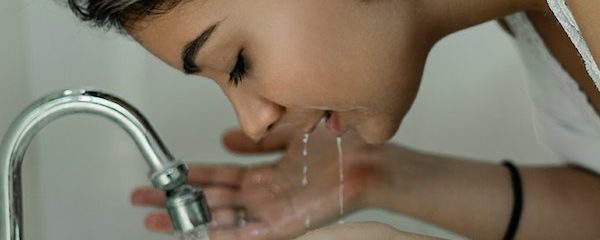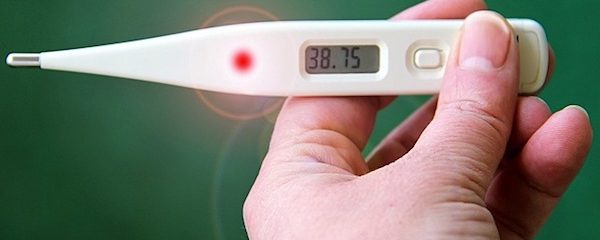Is Your Piercing Infected? Here’s How to Tell March 4, 2020 – Posted in: Informative – Tags: how to tell if you have a piercing infection, infection prevention, infection treatment, piercing infection treatment, piercing infections, piercings aftercare
Piercing infection highlights:
- Piercing infections occur when harmful bacteria are introduced to a healing piercing.
- The best way to avoid a piercing infection is to keep it clean.
- If you suspect that you have a piercing infection, visit a doctor immediately.
Piercing infections are a top concern of new piercees. And rightfully so; a bad infection can bring a whole host of issues. Luckily, infections are relatively uncommon and easily avoided.
Before you get any piercing, it’s important to know how to take care of it. Here’s a quick guide to infections, how to avoid them, and how to treat them in your new piercing.
What is a piercing infection?
Beyond the gaze of the human eye, entire systems of living creatures share the world around us. Many of these microorganisms help sustain our lives, but when the nasty ones enter our bodies, they can wreak havoc.
This is called an infection. An infection occurs when a foreign, harmful pathogen decides to become a squatter in your body. Infected wounds are susceptible to side effects such as scarring, lengthened healing times, and in extreme cases, sepsis and other more serious issues.
The good news is that piercing infections can be easily treated if they are caught early. The even better news is that they can be avoided simply by keeping your piercing clean.

Photo by Linneas Boland-Godbey
How to know if your piercing is infected
Your immune system acts as a white knight when it comes to getting rid of an infection. When it detects that intruders have entered your system, it calls its soldiers together to kill the invaders and rescue your body from harm.
When your immune system goes to war, you’re going to feel the effects. Many of the beginning signs of an infection are actually your body’s defense mechanisms in action. This is also why it can be easy to confuse an infection with natural healing, especially in the first days after you’ve received your piercing.
The biggest distinction between the symptoms of an infection and normal healing is their severity. If your piercing is causing only slight discomfort, it’s probably normal healing or another less serious issue. If it’s causing lots of pain and excreting a lot of colorful liquids, you might have an infection.
The rapid onset of symptoms can be a crucial clue to determine if your piercing is infected. If you went to bed with a healthy piercing and woke up with bad symptoms, you should probably visit a doctor. Conversely, if it’s felt a little painful over the last few days, it’s likely something else.
Signs of a piercing infection
- It feels hot around the piercing site.
- The skin around your piercing starts to swell. This is especially important to note if it’s been a few weeks after you’ve been pierced, and initial swelling already went down.
- It’s painful to touch.
- Your piercing excretes green, yellow, or bright white liquid. While clear or white-ish liquid is a normal part of healing, colorful stuff is never good.
If you see any of the above symptoms, then you must visit a medical professional immediately. Piercing infections go beyond what piercers can treat, and the key to fighting an infection is by quickly administering the proper medicine. You must visit a doctor ASAP as soon as symptoms appear.
The good news is that real, serious infection is actually quite rare, and if you’re taking care of your piercing properly, you shouldn’t see infection at all. However, it’s important to note the symptoms, and you need to understand that infection can happen, and in extremely rare cases, it can cause serious complications. It’s always better to be safe than sorry.
How to Clean a New Piercing
The key to avoiding infection is by keeping your piercing clean. To care for a new piercing, spray a cotton swab or paper towel with a piercing aftercare saline solution, then gently wipe the front and back of the piercing. Once the piercing is clean, dry the front and back with a clean cotton swab or paper towel. Do this 2 – 3 times daily.
How to prevent an infection
Since the piercing world tends to be associated with a more rebellious nature, it’s easy to assume that you can stick a safety pin or sewing needle into your skin and everything will be okay. However, you should think of your piercing more as a medical procedure than an act of rebellion.
Set yourself up for success by choosing a reputable piercer. Their studio should look and smell clean, and any instruments they use should come in sealed bags or they should sterilize their tools in an autoclave immediately before piercing. Think about it this way: if your dentist came out with questionable tools, you wouldn’t let them anywhere near your mouth. Treat your piercing the same way.
View our guide to choosing a reputable piercer here.
Once you’ve gotten pierced by a reputable piercer, make sure to adhere to proper aftercare practices. Clean your piercing 2 – 3 times a day by spraying each side of the piercing, then carefully wiping them with a Q-tip or gauze. This is especially important during the early days of healing. For on-the-spot treatments, carry a travel-sized aftercare solution with you.
Keep in mind that although infections are most likely to happen in the first few weeks of healing, they can happen at any time. Keep up with aftercare practices until your piercer says that you’re fully healed. In many piercings, the piercing will appear healed before it has completely healed internally, so it’s a good idea to have a professional look at it before stopping aftercare practices.

Photo by Klaudia Ekert
Treatment
If you’re concerned that you might have an infection, it’s best to err on the side of caution and talk to a medical professional. When in doubt, we always recommend seeking help over self-diagnosis and treatment.
The only way to treat a piercing infection is to get antibiotics from your doctor. Take as prescribed.
If you aren’t sure if your piercing is simply irritated or might actually be infected, seeing a doctor is your best bet. If you can’t see a doctor right away, consult with your piercer as soon as possible. Often, piercing complications are simply irritations that a little extra attention can fix. If you are seeing those surefire signs of infection—green pus, fever, extreme pain or swelling—see a doctor immediately.
DO NOT use rubbing alcohol, hydrogen peroxide, or other chemicals often used to disinfect wounds. These products use chemicals that can irritate the piercing. They can also encourage complications like piercing rejection, so you must stick to saline solution and other products created specifically for piercing aftercare.
Your new piercing faces many foes during healing, but infections can be the most dangerous. While infections are fairly uncommon, they typically occur because of poor aftercare practices. Keep your new piercing clean, maintain aftercare practices throughout the entire healing process, and find a piercer that you can trust during piercing and after, and you should be able to keep infections at bay.







